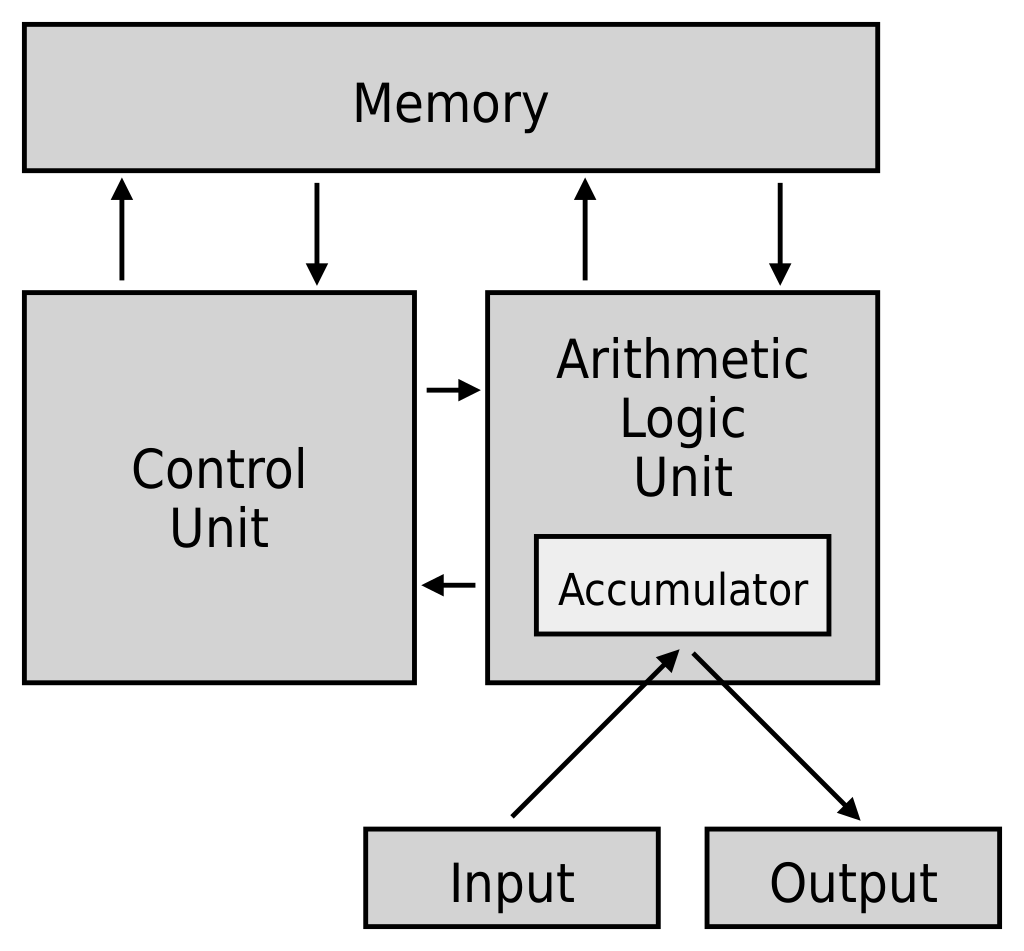
The first design for a program-controlled computer was Charles Babbage's Analytical Engine in the 1830s, with Ada Lovelace conceiving the idea of the first theoretical program to calculate Bernoulli numbers. A century later, in 1936, mathematician Alan Turing published his description of what became known as a Turing machine, a theoretical concept intended to explore the limits of mechanical computation. Turing was not imagining a physical machine, but a person he called a "computer", who acted according to the instructions provided by a tape on which symbols could be read and written sequentially as the tape moved under a tape head. Turing proved that if an algorithm can be written to solve a mathematical problem, then a Turing machine can execute that algorithm.[6]

The first design for a program-controlled computer was Charles Babbage's Analytical Engine in the 1830s, with Ada Lovelace conceiving the idea of the first theoretical program to calculate Bernoulli numbers. A century later, in 1936, mathematician Alan Turing published his description of what became known as a Turing machine, a theoretical concept intended to explore the limits of mechanical computation. Turing was not imagining a physical machine, but a person he called a "computer", who acted according to the instructions provided by a tape on which symbols could be read and written sequentially as the tape moved under a tape head. Turing proved that if an algorithm can be written to solve a mathematical problem, then a Turing machine can execute that algorithm.[6]